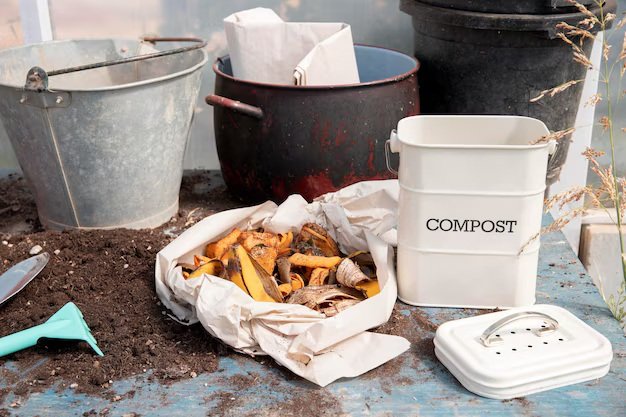What Are 5 Benefits of a Community Garden?
In a 2020 study, researchers found that converting vacant lots into community gardens in Milwaukee was associated with significant reductions in violent and nuisance crimes within a 250-meter radius. That statistic alone might seem surprising—after all, how can a patch of soil and some vegetables help reduce crime? But when you dig deeper, it makes perfect sense. Community gardens are far more than just shared plots of land; they are powerful catalysts for health, connection, learning, and resilience.
A community garden is a collectively managed space where individuals grow food, flowers, or native plants—often in urban areas where access to green space is limited. These gardens thrive on shared effort and shared benefit, creating opportunities for people of all backgrounds to come together with a common purpose. Whether tucked into a vacant lot, sprouting behind a school, or spreading across a rooftop, community gardens transform overlooked spaces into vibrant, productive ecosystems.
In this article, we’ll look into five meaningful benefits of community gardens, ranging from enhanced health and nutrition to economic empowerment and environmental sustainability. Each benefit is rooted not only in evidence but in lived experience, showing how these humble gardens can plant seeds of transformation in both people and places.

In This Article
- 1. Enhancing Health and Nutrition
- 2. Fostering Social Connections and Community Engagement
- 3. Advancing Environmental Sustainability
- 4. Stimulating Economic Development
- 5. Enhancing Educational Opportunities
- Conclusion
1. Enhancing Health and Nutrition
Boosting Fruit and Vegetable Intake
One of the standout advantages of community gardening is the positive impact on dietary habits. Research indicates that individuals involved in community gardening consume fruits and vegetables more frequently than those who aren’t. A study published in the Journal of Nutrition Education and Behaviour found that adults participating in community gardens ate fruits and vegetables 1.4 times more per day and were 3.5 times more likely to consume them at least five times daily compared to non-gardeners.
This increase in fresh produce consumption isn’t just about quantity; it’s about quality too. Homegrown fruits and vegetables are often richer in nutrients and free from the preservatives found in store-bought options. By growing their own food, gardeners have better control over their diet, leading to improved overall nutrition.
Promoting Physical Activity
Gardening is a form of moderate-intensity exercise that offers a full-body workout. Activities like digging, planting, weeding, and harvesting engage various muscle groups, enhancing strength, flexibility, and endurance. According to the Centres for Disease Control and Prevention (CDC), engaging in gardening for just 30-45 minutes can burn up to 300 calories.
Beyond calorie burning, gardening tasks contribute to cardiovascular health and can help maintain a healthy weight. The repetitive motions and varied movements involved in gardening also improve motor skills and coordination, making it a holistic physical activity suitable for all ages.
Supporting Mental Health
Beyond the physical benefits, community gardening has a profound impact on mental well-being. Engaging with nature through gardening has been shown to reduce stress, anxiety, and depression. The University of Colorado Boulder study reported that participants experienced reduced anxiety levels.
Similarly, a government-backed project in England demonstrated that prescribing nature-based activities, including community gardening, significantly improved mental health. Participants reported increased happiness and reduced anxiety, with happiness scores rising from 5.3 to 7.5 out of 10 and anxiety scores dropping from 4.8 to 3.4.
2. Fostering Social Connections and Community Engagement
Building Social Capital
Social capital refers to the networks and relationships that enable communities to function effectively. Community gardens naturally cultivate this capital by bringing together people from diverse backgrounds to collaborate and share experiences. According to a study published in ScienceDirect, community gardens serve as important spaces for building social capital, fostering connections among individuals that cultivate norms of reciprocity and civic engagement.
These gardens act as communal hubs where trust is built, knowledge is exchanged, and mutual support is fostered. They provide a setting where individuals can engage in meaningful interactions, leading to stronger community ties and a more cohesive social fabric.
Empowering Communities
In Houston’s Third Ward, Alabama Gardens is a typical example of how community gardening can empower a community. Established in 1985 by Verious Smith, the garden began as a means to provide food for elderly residents struggling to make ends meet. Over the years, it has grown into a symbol of resilience and empowerment, offering residents access to fresh produce and a sense of ownership and pride in their community.
Managed for decades by community leader J.D. Green, Alabama Gardens has become a place where individuals come together to learn, grow, and support one another. The garden’s success demonstrates how community-driven initiatives can address food insecurity while strengthening social bonds.
3. Advancing Environmental Sustainability
Enhancing Urban Biodiversity
Community gardens contribute to urban biodiversity by providing habitats for pollinators and other beneficial organisms. A study conducted in New York City’s Bronx and East Harlem neighbourhoods revealed that these gardens hosted 54 different bee species, accounting for about 13% of the state’s known bee fauna. This diversity not only supports local ecosystems but also enhances pollination for nearby plants, contributing to urban food production.
Beyond bees, these green spaces attract butterflies, birds, and other wildlife, creating pockets of biodiversity in densely populated areas. The presence of diverse plant species and natural habitats within community gardens fosters a balanced ecosystem, promoting ecological stability and resilience.
Promoting Sustainable Practices
These gardens often incorporate eco-friendly practices that reduce environmental impact and educate participants on sustainable methods:
- Composting: Many community gardens implement composting programs, turning organic waste like food scraps and yard debris into nutrient-rich soil. This process reduces landfill waste and lowers greenhouse gas emissions. According to the Environmental Protection Agency (EPA), composting helps divert organic materials from landfills, mitigating methane emissions and enriching soil health.
- Rainwater Harvesting: To conserve water, some gardens collect and store rainwater for irrigation. This practice reduces reliance on municipal water supplies and helps manage stormwater runoff. Rainwater harvesting is recognised globally as a sustainable method for water conservation, especially in urban agriculture.
- Organic Farming: Community gardens often avoid synthetic fertilisers and pesticides, opting for organic farming methods. This approach maintains soil health, protects local waterways from chemical runoff, and supports a more resilient ecosystem.
4. Stimulating Economic Development
Increasing Property Values
The presence of a community garden can enhance the appeal of a neighbourhood, leading to increased property values. Research from the Furman Centre for Real Estate and Urban Policy indicates that properties within 1,000 feet of a community garden in New York City experienced a significant rise in value compared to those farther away. This effect was especially pronounced in low-income neighbourhoods, where property values increased by as much as 9.4% within five years of a garden’s establishment.
Reducing Food Expenses
For many families, especially those in food deserts or facing economic hardships, community gardens provide a vital source of fresh produce, reducing the need for costly grocery store trips. A policy brief from the University of Minnesota highlights that participating in community gardening can save households approximately $450 annually on produce expenses.
Beyond the financial savings, growing one’s own food empowers individuals with knowledge about nutrition and self-sufficiency. It also fosters a deeper appreciation for the effort involved in food production, leading to more mindful consumption habits.
Fostering Local Economies
Community gardens can also stimulate local economies by creating opportunities for small-scale entrepreneurship. Gardeners often sell excess produce at farmers’ markets or to local businesses, keeping money within the community and supporting local food systems. Moreover, these gardens can serve as educational hubs, offering workshops and training programs that equip residents with valuable skills in agriculture, sustainability, and business.
In areas like Jacksonville, initiatives such as “aGROWhoods” are expanding community gardens to combat food deserts and promote economic development. By planting fruit-bearing trees and establishing gardens in every ward, the city aims to provide fresh produce to residents and create opportunities for local commerce.
5. Enhancing Educational Opportunities
Teaching Practical Skills
In Manistee, Michigan, the Spirit of the Woods Garden Club exemplifies how gardening can be a hands-on educational experience. Collaborating with the Armoury Youth Project, the club engages young individuals in activities like raised bed gardening, composting, and plant care. These sessions not only teach horticultural techniques but also instil values of responsibility and teamwork. The club’s initiatives have led to the donation of 250 pounds of produce to local food banks, showcasing the tangible impact of community involvement.
Similarly, in Chandigarh, India, a kitchen garden initiative has been introduced in government schools to enhance environmental awareness among students. By allocating garden plots within school premises, students learn about plant growth, sustainability, and healthy eating habits firsthand.
Promoting Food Literacy
Gardening serves as a powerful tool to educate individuals about the origins of their food and the importance of nutritious diets. According to a systematic review published in BMC Public Health, school garden-based programs have shown promising effects in improving children’s knowledge of food, nutrition, gardening, and science. Active participation in gardening activities, combined with classroom lessons, enhances children’s understanding of healthy diets and empowers them to make informed food choices.
In Cape Town, South Africa, urban food gardens are fostering community bonds and promoting food justice. These gardens not only provide fresh produce to local communities but also educate residents about sustainable farming practices and healthy eating. By involving youth in gardening activities, these initiatives are building skills, resilience, and a sense of community ownership.
Furthermore, in Seattle’s International District, the Danny Woo Community Garden offers a “Seed-to-Plate” program for children. This initiative teaches kids about sustainable food production, nutrition, and the science behind agriculture, fostering a deeper connection to the food they consume.
Learn More: 10 Benefits of Gardening to the Environment and Why You Should Get Involved
Conclusion
Community gardens are powerful tools for promoting health, fostering social connections, advancing environmental sustainability, stimulating economic development, and enhancing education. By participating in or supporting community gardening initiatives, individuals can contribute to the well-being of their communities and the planet.
Actionable Steps to Get Involved
- Join a Local Community Garden: Research existing community gardens in your area and inquire about membership or volunteer opportunities.
- Start Your Own Garden: If none exist nearby, consider starting a community garden. Reach out to local government, schools, or community organisations for support and guidance.
- Educate Yourself and Others: Attend workshops or seminars on gardening, sustainability, and nutrition. Share your knowledge with friends, family, and neighbours.
- Advocate for Green Spaces: Support policies and initiatives that promote the development and maintenance of community gardens and green spaces in urban planning.
- Incorporate Sustainable Practices: Implement eco-friendly practices in your gardening efforts, such as composting, using native plants, and conserving water.







